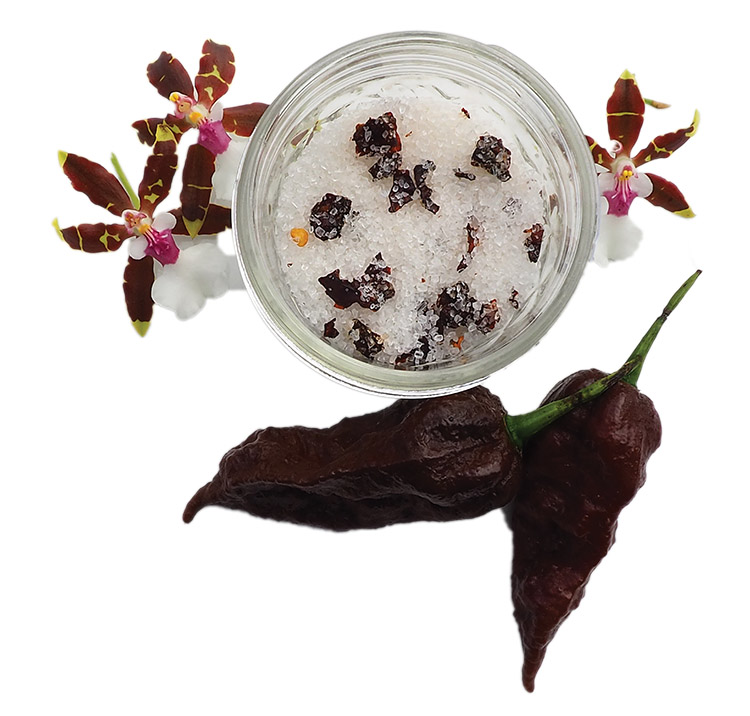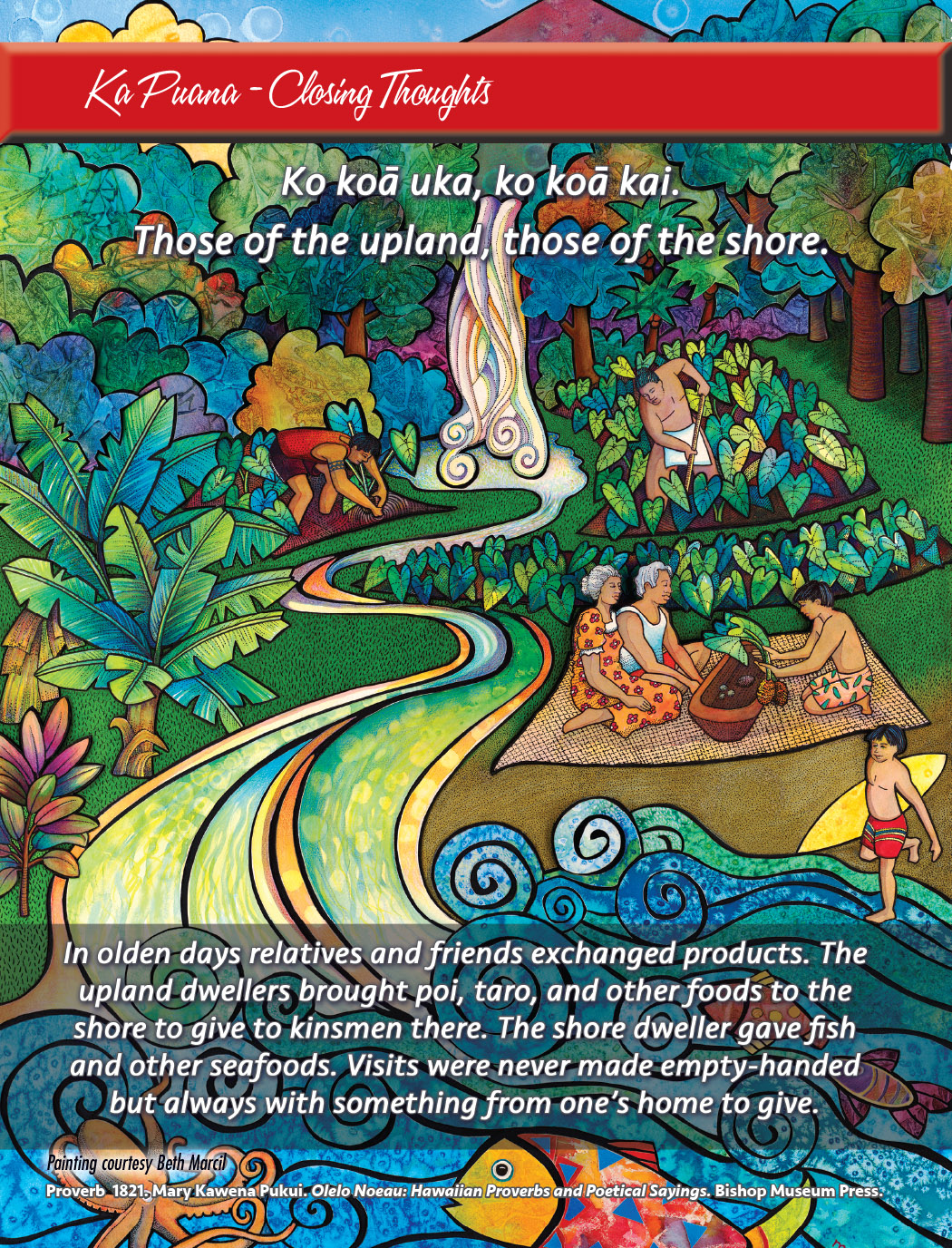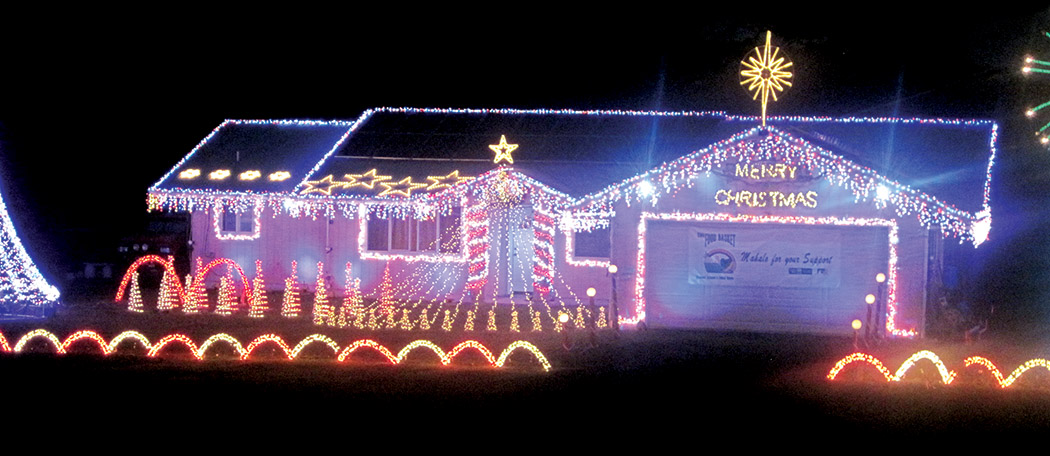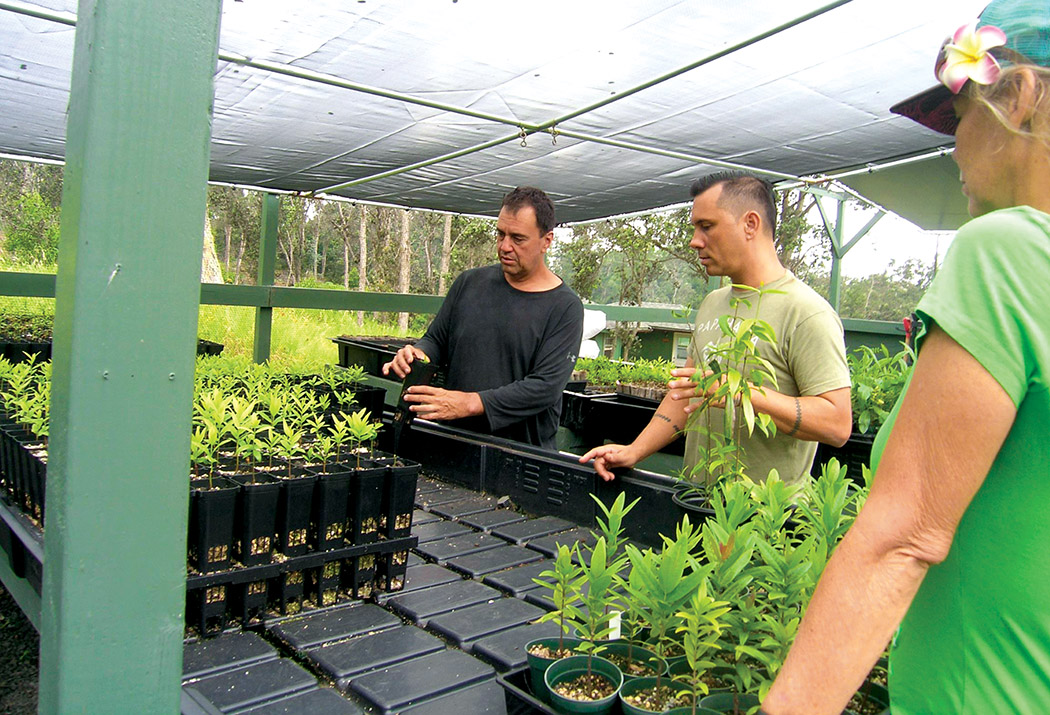
Reforest Hawai’i: Feeding the Forest, Feeding the Soul

By Jan Wizinowich
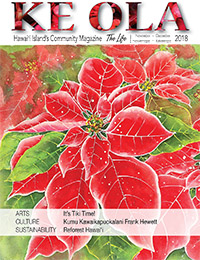
Aloha is at the heart of everything Joe and Kristen Souza do and when the forest spirits called, they answered by creating Reforest Hawaiʽi, whose sole purpose is to rebuild Hawaiʽi’s native forests where “the journey of the ʽukulele starts,” says Joe.
Joe started playing ʽukulele when he was nine and eventually became intrigued with the fine shadings of sound produced by the instrument, leading him to become a master ʽukulele builder. While working as a fireman, he began to learn the craft from master luthier, “Uncle Pete” Burmudez. Joe swept the floor, watched, and started tinkering on his own.
Eventually Joe started crafting ʽukulele in a patio workspace in his Heʽeia, Oʽahu home and in 1998, created Kanileʽa ʽUkulele, an internationally-known producer of world-class instruments, producing about 2400 ʽukulele a year. Then realizing that all those beautiful nuanced sounds are vibrations from deep in the soul of the koa (Acacia koa) tree, he went looking for the source.
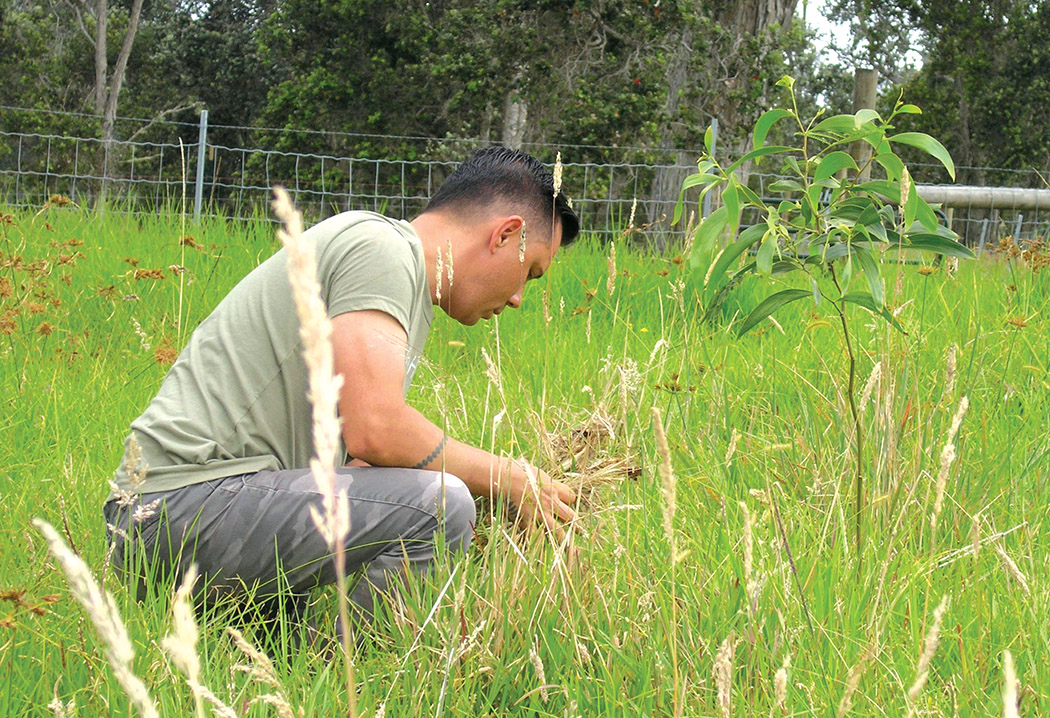
The Forest Calls
In 1998, when Joe won an interisland trip in a falsetto-singing contest, he and Kristen decided to go to Kauaʽi to look for a place to plant a forest. “We drove around with our oldest son Kaimana and found these beautiful properties up in the mountains and just imagined planting trees, but nothing really stood out,” says Kristen.
Several years later, “I was sitting on the couch one day and something told me to look up property on Hawaiʽi Island,” recalls Kristen. The first property that popped up online was a 96-acre parcel within Hōkūkano Ranch, the combined properties of Greenwell Estate and Kealakekua Ranches, purchased by the Pace family in 1986 and 2004, respectively.
Kristen called their real estate agent and the next day they were on an airplane to Hawaiʽi Island from Oʽahu. “We’re going up through Hōkūkano Ranch. It was beautiful. There’s horses, sheep, llamas, buffalos, turkeys. And then we drove up into the forest with all these native trees. It was amazing.” Within two days of that first phone call in 2014, Joe and Kristen Souza purchased the property, began their journey into the forest, and haven’t looked back.
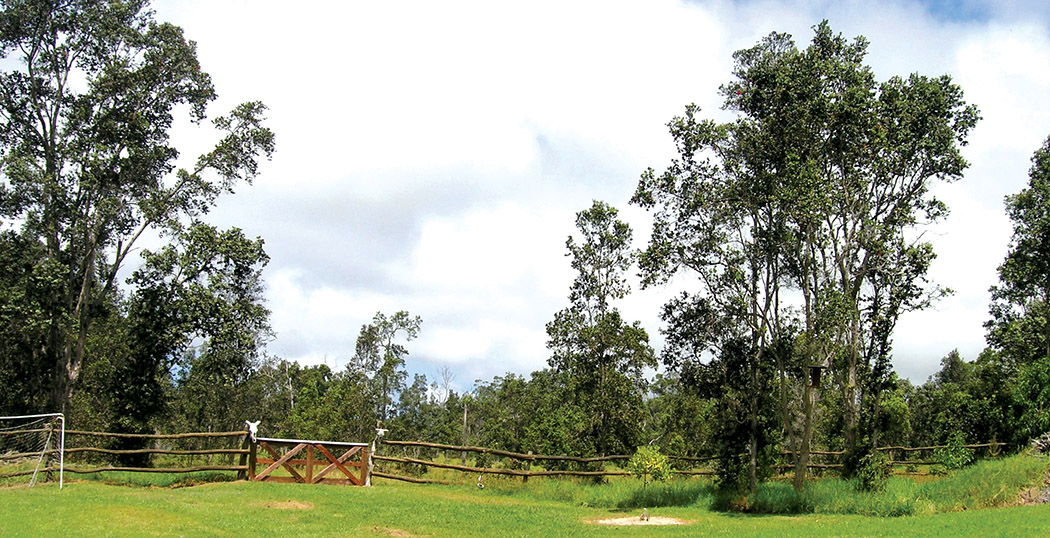
The Journey into the Forest
Kristen, who literally hums with energy, meets me at the Hōkūkano Ranch gate and we travel upland to the forest. As we enter Reforest Hawaiʽi, we are greeted by young koa trees. “Pōmaikaʽi Lyman planted this one for her grandmother, who is Auntie Genoa Keawe. We wanted her right at the entrance to guide us in,” explains Kristen.
Passing through towering ʽōhiʽa (Metrosideros polymorpha), koa, and a forest floor choked with native understory plants, the road up to the 4000-foot parcel, an ancient mauka-makai (mountain to sea) trail, opens up into a clearing bursting with life, a small compound of cabins, and a greenhouse. We are surrounded by lush trees over 20 feet tall that simply radiate life and the sense that they are standing watch.
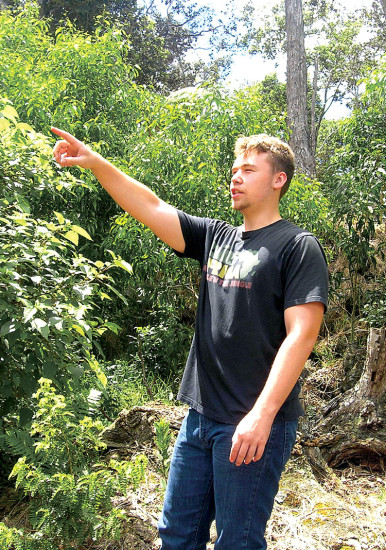
“Those were all planted in 2016. The first day we walked here as the new stewards, we had no idea, other than this is what we had to do. But now that we are here we can appreciate this deeper forest and have a better understanding of our kūpuna (elders) and who we are as a people. Not only did the journey of the ʽukulele start here, but also the journey of who we are as Hawaiians started here,” says Joe.
To work towards creating a bio-diverse forest, the Souzas have gleaned knowledge from cultural practitioners, and reforestation experts. “We’re learning how to create a successful bio-diverse forest. The first out-planting, I’d say we were in preschool. But even just knowing what we did, out of the 5000 keiki (seedlings) we planted we only lost five,” says Joe.
One of the first things Joe and Kristen did was to work together with their three sons, Kaimana, Iokepa, and Kahiau to pull out invasive plants such as fire weed and German ivy and that is when the magic began. “We pulled out lots of invasives and then when we came back, there were all of these keiki koa volunteers. They were just waiting for the right moment,” says middle son, Iokepa.
One might think that because Joe builds ʽukulele that this reforestation effort will provide wood for future instruments, but Joe and Kristen buy their koa from sustainably-farmed sources and there is absolutely no plan to harvest any of the native trees.
“There’s a beautiful old koa tree that lived its life. There are a few keiki volunteers and we got lots of seeds from it, but we didn’t take any of the wood. We just appreciate the beautiful life this kupuna has led, a sentinel in the forest that has seen hundreds if not thousands of people going up and down [the mauka-makai trail the Souzas named Ala Ponoʽī],” explains Joe.
The Souzas organize a major out-planting once a year, usually in September, and the plan is to plant 8800 trees this year. The greenhouse is bursting with seedlings. ʽIliahi (sandalwood, Santalum paniculatum) pop up in trays like a miniature forest. “There are hundreds of seeds in there and then as they come up we transfer them to pots,” explains Kristen.
There is tray after tray of koa, māmane (Sophora chrysophylla), māmaki (Pipturus spp.), ʽiliahi, naio (Myoporum sandwicense), and native ferns all waiting to find their place in the forest. The trays fill from the bottom to irrigate the plants daily and the water drains down into buckets and is reused. The Souzas have established a nonprofit, Saving Hawaiʽi’s Forests, and will be seeking funding to improve their irrigation system and expand the capacity of the greenhouse.
The Song of the Forest
To own a Kanileʽa ʽukulele is to become a member of the forest ʽohana, which means planting trees. Today, cultural practitioner and musician Cody Pueo Pata and his partner Keoni Kuoha are on hand to talk story. Pueo and Keoni are both part of Papahana Kualoa, a place-based education program on He‘eia Stream just minutes from the Souzas’ factory in Kāneʽohe, O‘ahu.
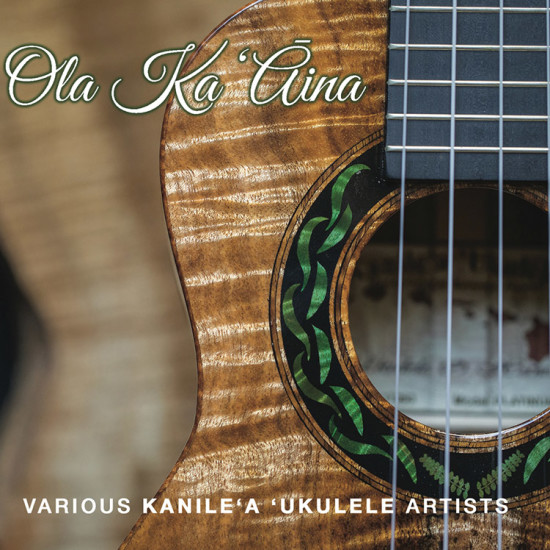
“I get to the factory and as an ‘ukulele player, the reverberation, the tone, everything about it, I’m instantly in love. I saw their banner: ʽOla Ka ʽĀina, Ola Ke Kanaka’ [When the land lives, the people live] and then their work ethic and their manaʽo about what they’re actually trying to do and I went home and I was so inspired I wrote a song,” recalls Pueo.
Since that time, Pueo has become a historical and cultural advisor for the Souzas, pointing out that the 96-acre parcel, named Nani ʽEkolu, straddles the boundary between North and South Kona and so is a water source for both districts.
For many of the Kanileʽa artists the forest is a source of inspiration, which has led to the creation of Ola Ka ‘Āina, a CD that was released at a fundraising concert at the Hawaiʽi Theater on September 9th. “All these artists have written songs about reforestation, sustainability, and their experiences planting trees, and that’s what our CD is all about,” says Kristen. “It was a carbon-neutral event. We calculated how many trees we’d have to plant to offset the carbon footprint of travel and the concert itself,” she adds.
Kristen’s passionate aloha is all-encompassing and, “when Kahanuola Solatorio of the group Keauhou wrote ‘I Pu‘u Lehua,’ about the journey entering the forest, the scent of the maile [Alyxia olivaeformis], the birds chirping, the beautiful sunrise, planting your koa tree that is steadfast in the ground, I wanted to dance it at our concert. I needed a kumu [teacher] to teach me and Pueo choreographed the whole dance,” shares Kristen.
We talk story around the lunch table as the afternoon mists float around us, and Pueo shares some of his manaʽo (thoughts) about the forest. “Koa is a foundational species of the forest and it represents the water cycle. The trunk is Kū [traditional Hawaiian entity of masculinity] but the leaves are definitely Kāne [entity connected with water]. The spiral-shaped leaves themselves collect water. You might see a tree but I see surfaces where the mist can condense and become a water source, the lau kē wai, the leaves that drip water.”
Pueo also shares how scientific knowledge of the forest is recorded in stories. “We treat mo‘olelo as data bases. A lot of stories are how their kinolau [body forms] interacted in the forest. So when we have these mele or these stories that tell us these things, we know exactly what to expect and what a healthy system is supposed to look like,” explains Pueo.
Where the Past Meets the Future
Kanile‘a, which means “joyful sound,” is derived from a legacy that goes back many generations. “The full name is Kanileʽaokawaonaheleopāʽīʽī and it translates as: to seek a joyful sound and knowledge in the forest,” explains Kristen.
In October 2017, Joe and Kristen added a piece to the picture when they purchased another 162 acres of Hōkūkano Ranch land at the 5000-foot elevation that contains more than 100 seeding ʽiliahi trees. They also plan to construct a nēnē (Hawaiian goose, Nesochen sandvicensis) pond. “We are hoping that if we build the pond, they will fly in,” said Kristen.
Reforest Hawai‘i stands tall for generational continuity that honors the ancestors and with the help of the Kanileʽa ʽohana and many volunteers, the kūpuna forest will build on into the future. “We want our children, grandchildren, great-grandchildren and onwards to have the opportunity to walk in the forest,” concludes Joe. ❖
For more information: reforesthawaii.org
Mahalo Kona Coast Realty – Sustainability Story Sponsor
